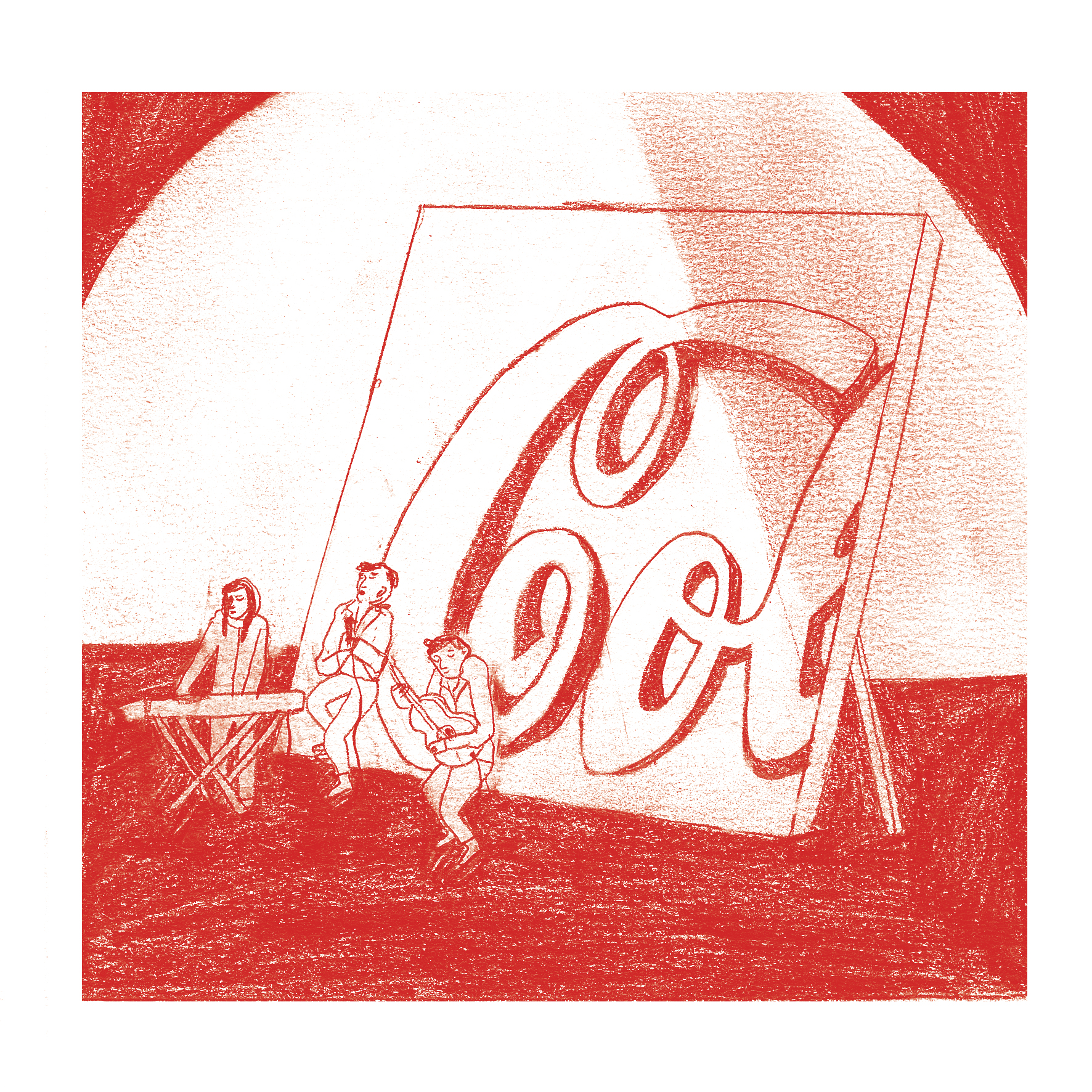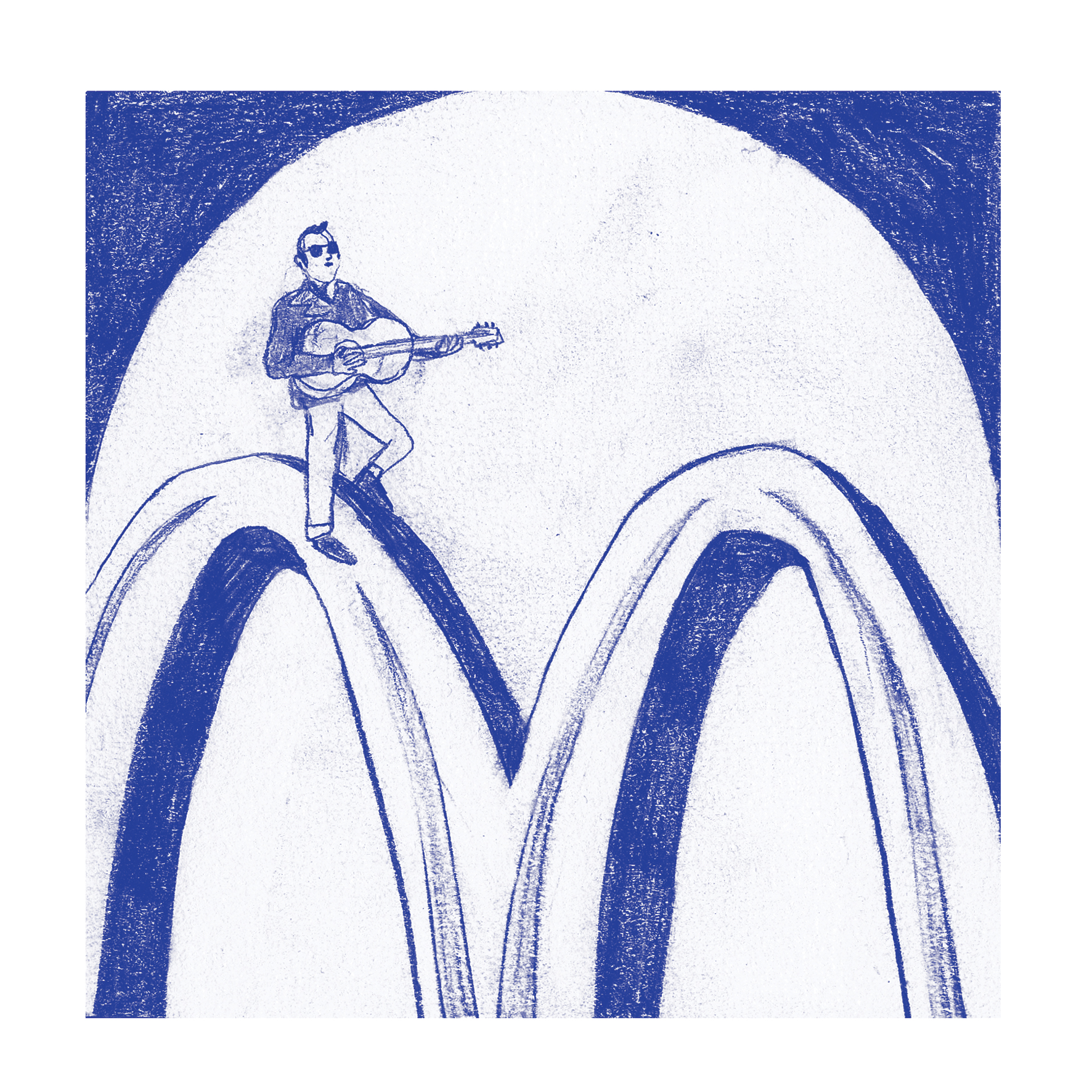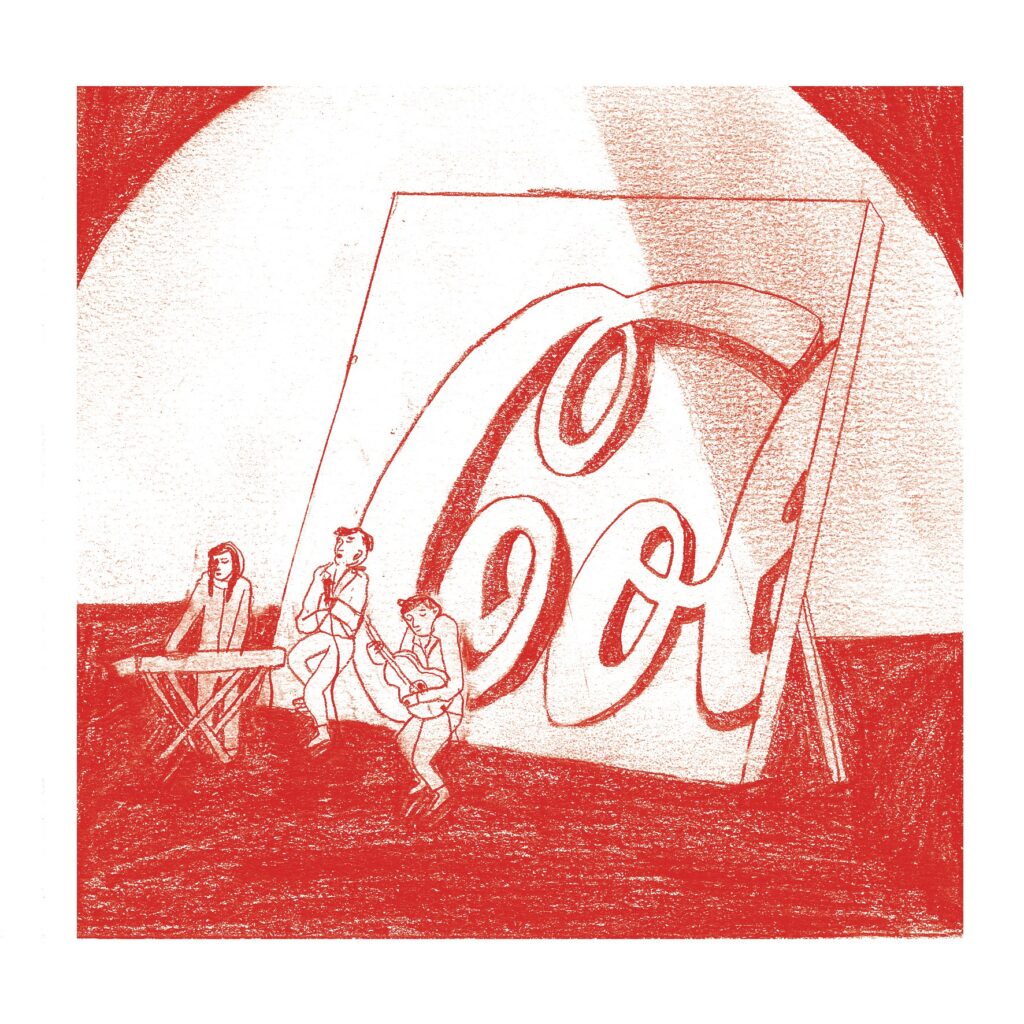Big brands that promote extreme metal and underground electronic music. It seems like a utopian thought, and you know the cliché: if it sounds too good to be true… Or is there something more going on this time? – Vertaling Bart Verbunt

“I’d rather have a colonic with boiling lead”, said Tom Waits when asked if he would ever allow his voice or personality to be used for advertising. Such blunt statements, and the rebellious reputation that accompany them, have always proven beneficial to his record sales: from the viewpoint of a marketeer, the product ‘artist’ entails not only his creative output, but everything he says, does, and is. The relationship between advertising and art has always been tense, to say the least. Now, however, a new trend in branding is blurring the strict border between the two worlds.
More and more brands that aim for a specific crowd no longer search for the direct support of the big stars, but build a more permanent platform from which they give structural and promotional support to very specific, often niche cultural scenes.
This is called ‘branded content’. What stands out most is that the brand, as well as the artists involved, and the public, seem to find an understanding in this arrangement that everyone is content with. Is this the beginning of a new kind of patronage, or is it, as some critics say, a matter of old wine in new bottles?
Dorito’s
The relationship between brands and what we all-embracingly call ‘content’, came to being in the 1930’s, with the rise of the radio. Snazzy advertising guys bought little time slots to promote their goods in the wake of popular programs, skilfully tailoring for the target audience (think for instance of the ‘soap operas’, radio plays sponsored by a soap brand). In the following years advertising was detached from the actual content. Commercials increasingly stood on their own, and were bundled in separate blocks.
Campaigns often relied on celebrities, and, from the 1980’s onward, more and more on creative talent with a solid reputation. Even cult directors like David Lynch, Chris Cunningham, and Spike Jonze let themselves be seduced by commerce, creating commercials for brands such as Sony Playstation, Nissan, Calvin Klein and IKEA. This culminated in the short film series ‘The Hire’ in 2001, which also marked the beginning of a new chapter.
The series was produced by the car brand BMW, and can be seen as a breakthrough that turned ‘branded content’ into a full-fledged marketing tactic. Every short film was directed by another big name, such as Guy Ritchie, Tony Scott, and Ang Lee. Playing the hotshot chauffeur ‘The Driver’, Clive Owen shared the lead with a variety of rented BMW’s. The films diverted strongly from what was seen as a law of nature in advertising: not the product but the story and the creative talent behind the productions were put in the spotlight.
The series was shown to the public on the website of the car brand, and booked instant results: BMW’s sales increased with twelve percent after the broadcast of the first film. The message to the advertising industry was clear: sell the experience and not the product, and with this little detour you’ll win over the consumer.
There is another important marketing trend: the ancient sponsoring of events. It’s as old as Rome, but has recently undergone a metamorphosis. Whereas sponsors used to participate as ‘passive’ benefactors in exchange for some exposure in the form of well-placed logos on banners and flyers, there is now an increasing tendency for them to actively become involved with the organization of an event, even with the content. As a result, Belgium was suddenly home to a jazz festival courtesy of the cigarette brand Belga (and later on Audi and Skoda), and the last edition of SXSW saw a slightly embarrassed Public Enemy performing on the ‘Dorito’s Stage’. A bridge too far? Sure. But it could all be different.
Music school
It’s 1997. The Austrian Red Bull has been producing a controversial pep drink for over ten years that nonetheless is becoming popular in certain circles: the extreme sports world, the nightlife scene; “in every place where people keep going for nights on end”, as Torsten Schmidt (co-founder of the Music Academy) states bluntly. Within the company’s marketing department, the idea rises not to spend their limited budget on the usual commercials and sponsoring. Instead they want to make a durable investment in the industries where their target audience can be found: sports and (dance) music. The brand sets up a number of extreme sporting events, but the promotional strategy for the clubbing scene is what causes the bigger fuss. A company from Cologne called Yadastar is hired as a consultant, and together with a number of journalists and musicians from the scene, a plan is made to support young talent in the industry.
A year later the Red Bull Music Academy is launched, with a first session in Berlin. The concept is surprisingly community-oriented for a corporate company: promising young musicians and DJ’s from all over the world are invited (through a page-long application form, in which they are asked to send in a mixtape) to spend a few days doing workshops and taking classes from veterans in their trade. Right from the start, people with an undisputed reputation in the underground scene are chosen. Teachers for this first edition are, among others, DJ Food, Jeff Mills, Juan Atkins, and hip-hop pioneer Grand Wizzard Theodore.
The participants are given the opportunity to make music alone or in teams. There are a few moments for the public and parties with DJ-sets, but Red Bull doesn’t lay claim on the output of the event, and the presence of the brand’s logo in the promotional material is very discrete. This tactic is consistently maintained, even when the project evolves into something resembling an institute after a few editions, with local events next to the main event, a radio station, e-zine, and a website featuring videos of entire lectures. In these videos as well, the brand Red Bull is nearly invisible, its presence limited to the logo flashing across the screen at the beginning and the end.

Ethical trade
Then what is the ‘return on investment’, as it is called in marketing terms? Credibility and a relationship of trust with the public. Some of the participants fully live up to the promise – Flying Lotus and Hudson Mohawke, for instance, need no introduction. By now almost every relevant name from all corners of the music industry features on the list of lecturers, not only DJs and dance producers. Bernard Purdie, Arto Lindsay, Joe Bataan, Steve Reich, Sly & Robbie, Tony Visconti, Trevor Horn… even the most skeptical of minds has to admit that attracting names like these shows a dedication and an engagement that can hardly be dismissed as an opportunist advertising stunt. In hindsight it turns out that Red Bull was operating as a pioneer. In the years to follow it becomes increasingly clear that the birth of an interactive society has surprising consequences for the relationship between consumer and omnipresent advertising. First of all, the global network causes a fragmentation of every thinkable fan base into many small niches. This makes it almost impossible for the average marketeer to make a decision about which artist to do business with based on just some sales figures and statistics. Furthermore (and admittedly, this trend is developing at a slower speed), the public is growing so accustomed to an overwhelming visual culture that a simple, straightforward advertising message no longer suffices to impress the consumer. The abundance of information and consumer feedback results in word-of-mouth advertising becoming the better option.
Structural support
As a friend of mine who’s an internet advertising agent recently stated: “There really is only one form of advertising that really works nowadays: make sure you have a good product.” So it makes sense that brands start to think about what they can offer their potential clients besides their main product or service. Ethical trading initiatives go down well these days, and are often part of a marketing strategy. Entertaining content is also a guaranteed crowdpleaser.
Content marketing have become buzz words for every company that even remotely looks ahead. Those who do it well, win the confidence of a specific target audience, which currently is more important than being permanently on the radar of the masses. The in-house production of content has another great advantage: it is a very efficient way of developing promotional materials – a lot cheaper than licensing existing materials, and more durable than sponsoring.
We’re under no illusions: the majority of promotional campaigns are designed by advertising agencies acting on behalf of companies, and as a result do not distinguish themselves through creativity. But following Red Bull’s example, a number of brands have started initiatives in which their logos are only very discretely present, and structural support to the creative community has the leading role. For clothing brand Converse producing its own music is an obvious step. Its Chuck Taylor All Stars (‘Chucks’) has been the favorite footwear of a long list of rock stars that spans generations (from The Ramones to Kurt Cobain), and a style icon within various subcultures. In 2010 the brand opened its own recording studio in Brooklyn. Every month famous and unknown musicians get a one-day recording session for free. The session is filmed, and the results can be published and promoted by Converse, but this is left up to the artist.
Transparency
The popular surf and skateboarding clothing brand Volcom (slogan: ‘Youth Against Establishment’) takes its engagement a step further. The Volcom record label is run by the rock star Kurt Midness (of RTX, among others), and signs mainly sludge metal and garage rock bands. The label launched promising bands such as Valient Thor (on Roadburn last year) and Tweak Bird, and published work of renowned veterans such as Torche, Wino, and Turbonegro as well. Not exactly the Biebers of this world.
However, the most ambitious and surprising platform was launched by Toyota. Scion A/V originated as a promotional channel for the budget line Scion. It specifically targets a younger audience by engaging and promoting underground artists that receive limited exposure. The catalog of digital releases on its website contains a few dozens EPs of a wide variety of artists, such as Moodymann, Melvins, Reigning Sound, and Daedelus, as well as exclusive music videos.
But there is more. For instance, the production of a documentary about the garage rock scene (‘New Garage Explosion!!: In Love With These Times’). The ‘Label Showcase’ events put a different label in the spotlight every month, with video interviews, samplers, live shows, and a showcase night. The focus is on extreme guitar labels such as Roadburn, Relapse, Profound Lore, and Nuclear Blast. Before we forget: Scion A/V sponsored the American tour of (Gonzo (circus) favorites) Yob and Pallbearer. And also in this case the visibility of the brand is limited to a logo discretely tucked away in the corner of the screen. According to artists and label bosses, the collaboration is always very transparent, without contracts with fine print or nasty surprises.
Trust
The initiators of such marketing projects are refreshingly, almost staggeringly honest about the exact nature of their initiative. Kevin Perry of the website Drowning For Sound experienced this when he visited the Red Bull Music Academy: “I meet the PR guy again and ask him straight up: ‘where’s the catch?’ He admits that the company doesn’t run the Academy out of love for humanity. For Red Bull it’s all about the notion of real involvement, for which the brand has to earn its place in the scene. It does this by helping out where record companies fall short. ‘Record companies don’t nurture talent anymore’, he says, ’this way we can do something for the music.’”
Scion A/V’s Jeri Yoshizu thinks along the same lines. It’s still marketing. It includes engagement because that is what the consumer expects nowadays, and because this way of doing business is cost efficient. During a panel meeting for her company she confesses: “It’s a lot cheaper to involve an underground artist than to try and get hold of Lady Gaga. It’s also easier: you don’t have to maneuver through ten layers of middle men.”
Nevertheless, you do find a sincere urge among the coordinators of projects like these to build a relationship of mutual trust with artists. It’s also remarkable that most of the coordinators of the initiatives mentioned above don’t have a background in marketing, but come from the cultural scene and culture or music journalism.
Kurt Midness stresses that having such insiders in marketing departments is important for achieving a structural effect: “Our advantage has been that we are truly committed to the music. I have been at it since I was a teenager, and the same goes for everyone I work with. As a result you have a big network, and that is vital: that artists know you personally and that they have faith in your judgement.”
Mutual relationship
Nevertheless, it remains a balancing act, because rebelling against the system is traditionally a substantial part of a healthy rock and roll mentality. It is therefore understandable that a large number of artists refrain from associating themselves with a commercial brand, no matter how much artistic freedom they might get. The discussion is largely about principles. At the most recent edition of Incubate festival the conflict was strikingly exemplified during the panel discussion ‘What’s Wrong With Selling Out?’ The English music journalist John Robb saw no problem in going for the money, and claimed that it is not essentially different from accepting subsidies. “In the end it’s just money”, he said. He was heavily challenged by Swedish musician Mats Gustafsson, who stated that his independence is sacred. To which Robb replied that not every artist has the luck of living in an affluent society with plenty of opportunities for public funding.
Similarly, Jurgen van den Brand of Roadburn Records (who did a collaboration with Scion A/V earlier this year) notes: “In the United States the government almost fully withdrew from funding art. This is not yet the case in the Netherlands. Clubs are being supported by the cities, there is funding. In the U.S. companies and the rich took up this role. There is an understanding there: if they don’t do it, nothing will happen.”
It is fatalistic however to think that there is no other way. From this point of view initiatives like Scion A/V are considered necessary evils: we have to deal with these companies no matter what, so let’s make the best of it. On the other hand: corporations and advertising people owe their bad reputation mainly to their opaque way of doing business, and their manipulative influence on both the public and the artists. With a younger generation that’s growing more and more sensitive to marketing, but also more alert, might also come a time in which companies are forced to choose for a relationship of mutual responsibility with their public and the culture they are ultimately a part of.
Dit is een vertaling van Bart Verbunt naar een stuk geschreven door Dimitri Vossen voor Gonzo #115. De Nederlandse versie van dit stuk kunt u hier vinden.
